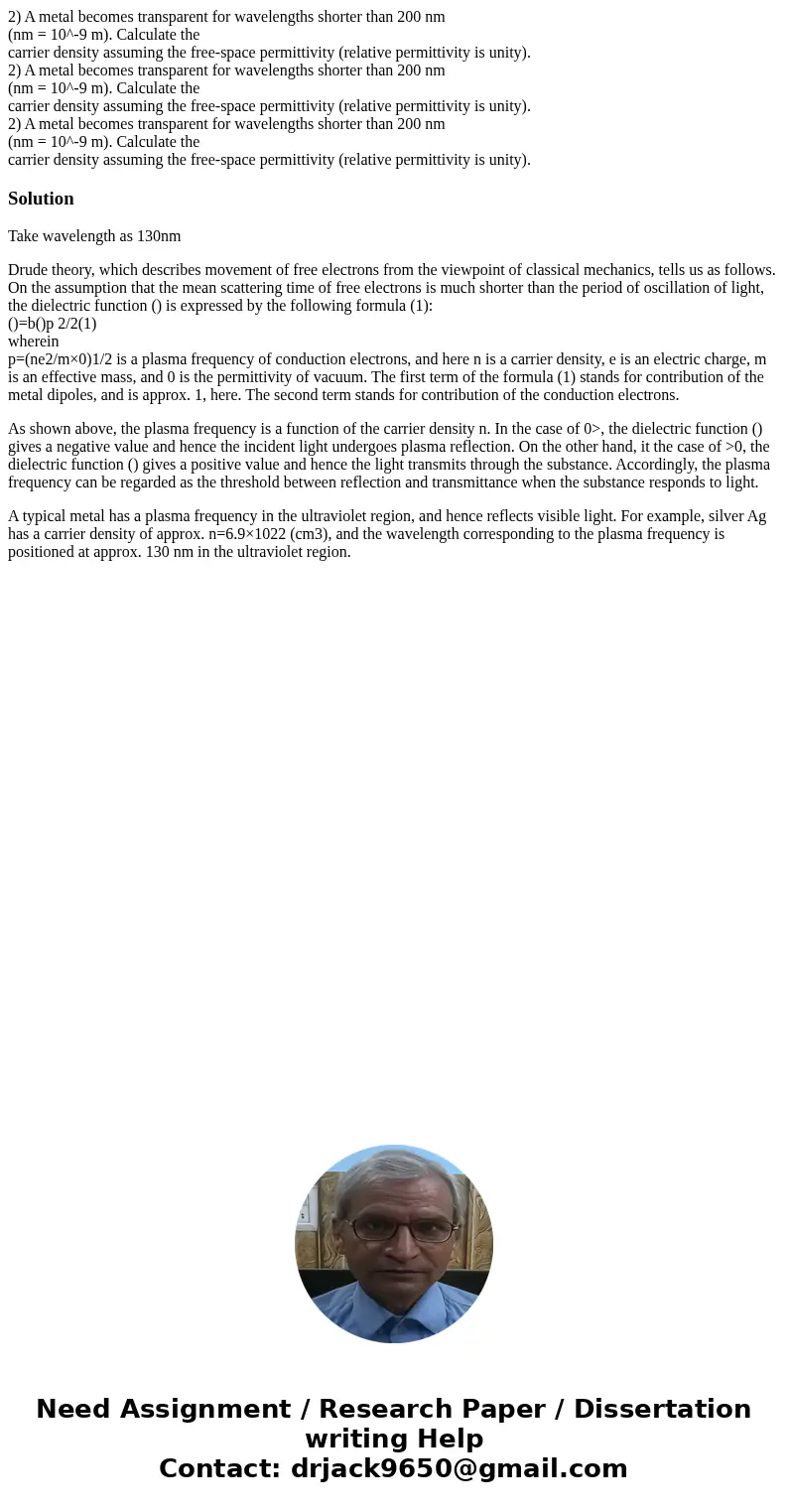2 A metal becomes transparent for wavelengths shorter than 2
Solution
Take wavelength as 130nm
Drude theory, which describes movement of free electrons from the viewpoint of classical mechanics, tells us as follows. On the assumption that the mean scattering time of free electrons is much shorter than the period of oscillation of light, the dielectric function () is expressed by the following formula (1):
()=b()p 2/2(1)
wherein
p=(ne2/m×0)1/2 is a plasma frequency of conduction electrons, and here n is a carrier density, e is an electric charge, m is an effective mass, and 0 is the permittivity of vacuum. The first term of the formula (1) stands for contribution of the metal dipoles, and is approx. 1, here. The second term stands for contribution of the conduction electrons.
As shown above, the plasma frequency is a function of the carrier density n. In the case of 0>, the dielectric function () gives a negative value and hence the incident light undergoes plasma reflection. On the other hand, it the case of >0, the dielectric function () gives a positive value and hence the light transmits through the substance. Accordingly, the plasma frequency can be regarded as the threshold between reflection and transmittance when the substance responds to light.
A typical metal has a plasma frequency in the ultraviolet region, and hence reflects visible light. For example, silver Ag has a carrier density of approx. n=6.9×1022 (cm3), and the wavelength corresponding to the plasma frequency is positioned at approx. 130 nm in the ultraviolet region.

 Homework Sourse
Homework Sourse